
Table of Contents
Garlic: A Powerful Herb with a Rich History and Numerous Health Benefits
Garlic, a small but mighty bulb, has been valued for centuries for its medicinal properties and culinary versatility. Revered in cultures across the globe, it has stood the test of time, transitioning from ancient remedies to modern superfood status. While garlic adds flavor to countless dishes, it is its potent health benefits that truly make it a standout herb. In this comprehensive blog, we will explore garlic’s historical significance, botanical profile, nutritional and phytochemical content, its incredible range of health benefits, various consumption methods, cautionary advice, and why this humble herb deserves a prominent place in your daily routine.
This site contains affiliate links, and I may receive a commission on purchases made through them. Please see our Affiliate Disclosure for more details.

Historical Significance
Ancient Roots
Garlic’s history stretches back more than 5,000 years, with early records of its use in ancient civilizations such as Egypt, Mesopotamia, and China. The ancient Egyptians were particularly fond of garlic, using it for both medicinal and spiritual purposes. Garlic was so revered in Egypt that it was even placed in the tombs of pharaohs to accompany them into the afterlife. The Bible also references garlic, emphasizing its importance in the diets of Israelites during their time in Egypt (Numbers 11:5). This connection to the past underscores garlic’s long-standing presence in Christian tradition as well.
In ancient Greece, garlic was prized by athletes, who consumed it to enhance strength and endurance. Greek physician Hippocrates, known as the “father of medicine,” prescribed garlic for a variety of ailments, including respiratory issues, digestive problems, and infections. Similarly, the Romans used garlic for its medicinal properties, and soldiers were said to eat it before battle to boost their courage and stamina.
Cultural Uses
Garlic’s reputation as both a food and medicine spread far beyond the Mediterranean. In traditional Chinese medicine, garlic was used to treat respiratory and digestive disorders, and it was believed to enhance longevity. In India, garlic is a key component of Ayurvedic medicine, used to balance the body’s energies and treat a wide range of conditions.
Across Europe, garlic was seen as a protective herb, with folklore attributing garlic the ability to ward off evil spirits and vampires. This belief persisted into the Middle Ages, when garlic was commonly hung in homes for protection.
Trade and Cultivation History
Garlic’s cultivation and trade expanded alongside global exploration. Its journey from Central Asia to Europe and North Africa was facilitated by the Silk Road, where it became a staple crop in many Mediterranean diets. Spanish explorers later brought garlic to the Americas, where it quickly became integrated into the local cuisine.
Today, garlic is grown worldwide, with China being the largest producer. Its versatility in both food and medicine has allowed it to maintain its significance through the centuries, and modern research continues to validate many of the health claims made by ancient civilizations.

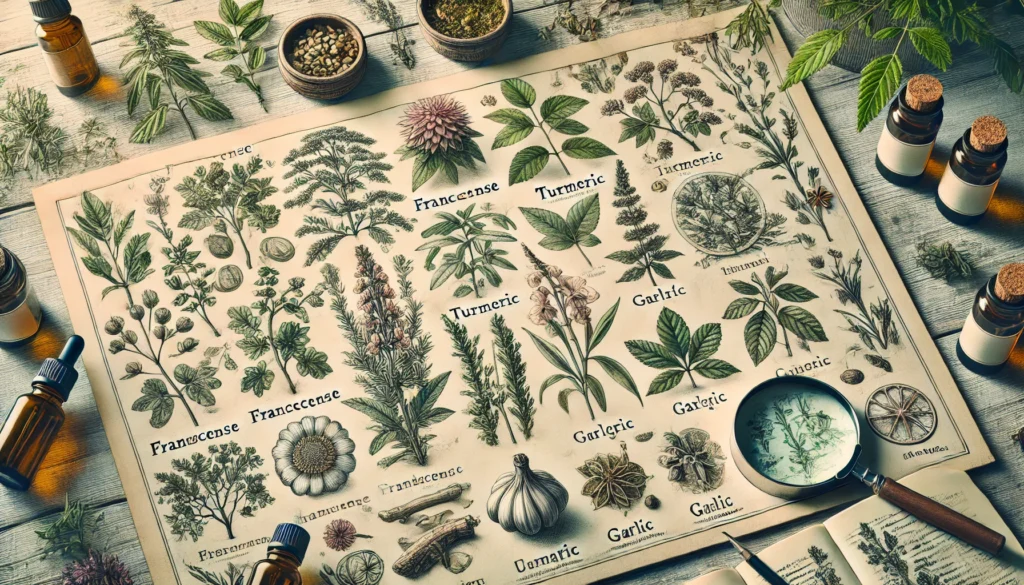
Botanical Profile
Plant Overview
Garlic (Allium sativum) is a member of the Alliaceae family, which also includes onions, leeks, and shallots. It is a perennial plant that grows from a bulb, which is the part we most commonly use. The garlic bulb consists of multiple cloves, each encased in a papery skin. The plant itself grows up to 3 feet tall, with long, green leaves and white or pink flowers.
Types of Garlic
There are two main types of garlic: softneck and hardneck.
- Softneck Garlic (Allium sativum var. sativum): This is the type most commonly found in grocery stores. Softneck garlic is easy to grow, stores well, and has a mild flavor. It is often used to make garlic braids due to its flexible stems.
- Hardneck Garlic (Allium sativum var. ophioscorodon): This variety has a stronger flavor and produces a flowering stalk called a “scape.” Hardneck garlic tends to have larger cloves but a shorter shelf life. Popular varieties include Rocambole and Porcelain garlic.
Growing Conditions
Garlic is relatively easy to grow, making it a popular choice for home gardeners. It thrives in well-drained soil and full sun. Garlic is typically planted in the fall, with cloves spaced a few inches apart and buried 1-2 inches deep. After a cold winter, the garlic will sprout in the spring and be ready to harvest by early summer.
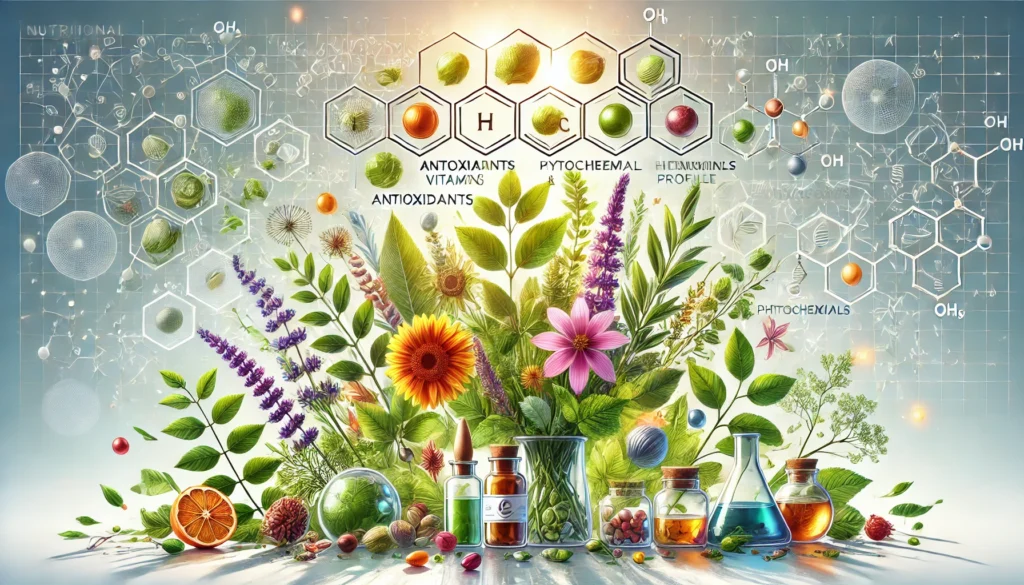
Nutritional and Phytochemical Profile
Nutritional Content
Garlic is a nutrient powerhouse despite its small size. It is rich in vitamins and minerals, including:
- Vitamin C: A potent antioxidant that supports immune function and skin health.
- Vitamin B6: Essential for brain health, hormone regulation, and the production of neurotransmitters.
- Manganese: Important for bone health, metabolism, and the body’s antioxidant defense systems.
- Selenium: Supports thyroid function and helps protect against oxidative damage.
- Calcium: Contributes to bone health and muscle function.
Garlic is low in calories but high in fiber, making it a great addition to any diet.
Phytochemicals
Garlic’s most notable compounds are its organosulfur compounds, which are responsible for its potent aroma and many of its health benefits. These include:
- Allicin: The compound formed when garlic is crushed or chopped. Allicin is known for its powerful antioxidant, antimicrobial, and anti-inflammatory properties.
- Diallyl Disulfide and Diallyl Trisulfide: These compounds have been shown to reduce inflammation and may play a role in cancer prevention.
- Saponins and Flavonoids: Antioxidants that help neutralize free radicals and reduce oxidative stress in the body.
Garlic also contains polysulfides, which support heart health by promoting blood vessel relaxation and improving circulation.

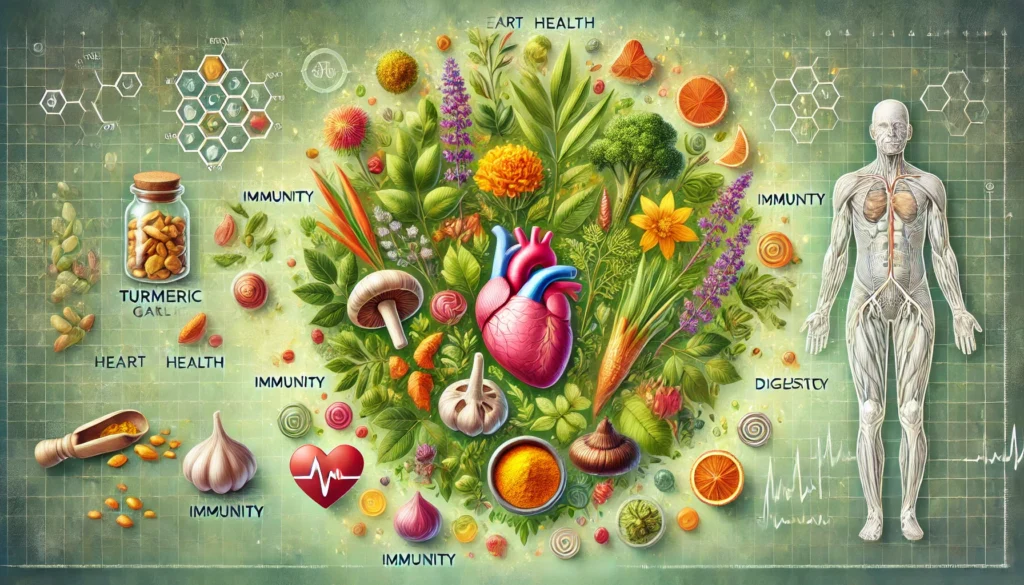
Health Benefits of Garlic
Garlic’s impressive array of bioactive compounds contributes to a wide range of health benefits, many of which are backed by scientific research.
Immune System Support
Garlic is perhaps best known for its ability to bolster the immune system. Several studies have demonstrated that regular garlic consumption can help prevent and reduce the severity of colds and the flu. One study found that participants who took garlic supplements had 63% fewer colds and recovered 70% faster compared to those taking a placebo. Allicin, the sulfur compound released when garlic is crushed, plays a key role in this immune-boosting effect by enhancing the activity of immune cells.
Cardiovascular Health
Garlic has been extensively studied for its cardiovascular benefits. It helps to:
- Lower blood pressure: Garlic has been shown to reduce blood pressure in people with hypertension. The sulfur compounds in garlic, particularly polysulfides, promote the dilation of blood vessels, which improves circulation and reduces strain on the heart.
- Improve cholesterol levels: Regular garlic consumption can help lower LDL (bad) cholesterol and increase HDL (good) cholesterol. This effect contributes to a reduced risk of heart disease.
- Reduce the risk of heart disease: Garlic’s ability to lower blood pressure and improve cholesterol levels makes it a heart-healthy addition to any diet. Studies suggest that garlic may also reduce the formation of blood clots, further lowering the risk of heart attacks and strokes.
Antioxidant Properties
Garlic is packed with antioxidants, which help neutralize free radicals and protect the body from oxidative stress. This protection is especially important for preventing the onset of chronic diseases and promoting healthy aging. Some studies suggest that garlic’s antioxidant properties may help reduce the risk of Alzheimer’s disease and dementia.
Anti-inflammatory Effects
The organosulfur compounds in garlic have powerful anti-inflammatory effects, which can benefit people with inflammatory conditions such as arthritis. Garlic’s ability to reduce the production of inflammatory cytokines can help alleviate pain and stiffness in joints, improving mobility and quality of life.
Cancer Prevention
Garlic is often praised for its potential role in cancer prevention. Several studies have shown that people who consume garlic regularly have a reduced risk of certain cancers, including stomach, colon, and prostate cancer. Allicin and other sulfur compounds in garlic are believed to help neutralize carcinogens, inhibit the growth of cancer cells, and reduce oxidative damage to DNA.
Antimicrobial and Antifungal Properties
Garlic’s antimicrobial properties have been known since ancient times, and modern research supports its effectiveness against bacteria, fungi, and viruses. Garlic has been shown to combat infections such as Candida (a common yeast infection) and may help treat conditions like athlete’s foot. Its antimicrobial effects also make it a useful remedy for minor skin infections.
Blood Sugar Regulation
Garlic may help regulate blood sugar levels, making it a valuable tool for people with type 2 diabetes. Studies suggest that garlic can improve insulin sensitivity, lower fasting blood sugar levels, and reduce the risk of diabetic complications.
Brain Health and Cognitive Function
In addition to its antioxidant properties, garlic contains compounds that have been shown to protect the brain from age-related damage. Garlic’s ability to reduce inflammation and oxidative stress may help prevent cognitive decline and neurodegenerative diseases such as Alzheimer’s and Parkinson’s.
Detoxification
Garlic’s sulfur compounds, including allicin and diallyl disulfide, support the body’s natural detoxification processes. Garlic has been shown to help remove heavy metals, such as lead and mercury, from the body. One study found that garlic supplementation significantly reduced lead levels in the blood of workers exposed to lead, while also improving symptoms such as headaches and high blood pressure.
Skin Health
Garlic’s antimicrobial properties can benefit the skin by helping to treat acne, reduce inflammation, and speed up wound healing. Some people apply crushed garlic topically
to fight bacterial infections and promote skin health, though caution is needed to avoid irritation.

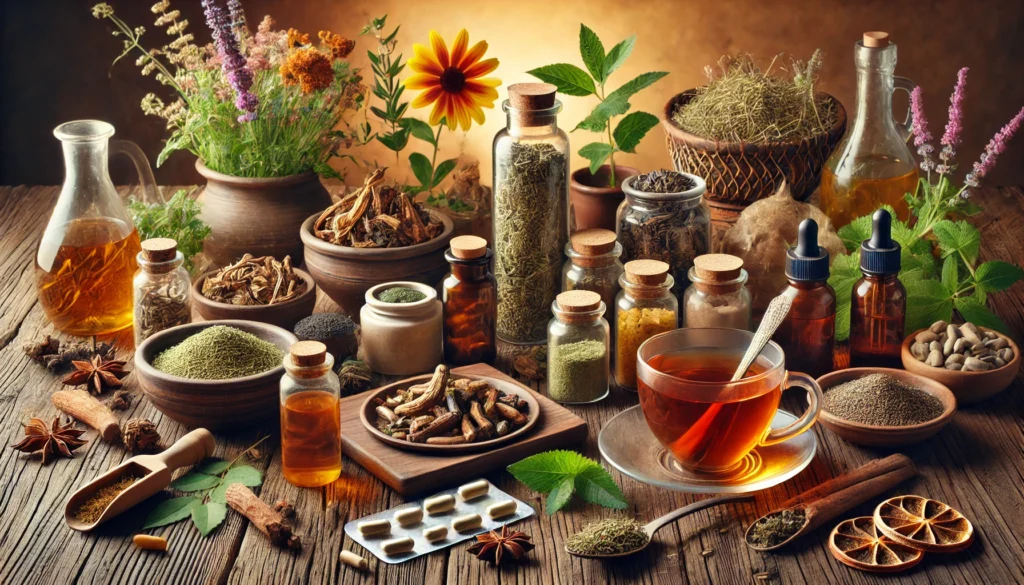
Methods of Consumption
Garlic can be consumed in a variety of forms, each offering its own unique health benefits.
Raw Garlic
Raw garlic is the most potent form, as it contains the highest levels of allicin. To maximize the benefits of allicin, it is recommended to crush or chop garlic and let it sit for 10 minutes before consuming it. This allows the allicin to fully activate. Raw garlic can be added to salads, dressings, or simply eaten on its own for a powerful immune boost.
Cooked Garlic
Cooking garlic softens its flavor and reduces its pungency, making it more palatable for those who find raw garlic too strong. While cooking garlic reduces the amount of allicin, it still retains many of its health benefits, particularly its antioxidant properties. To preserve as much of the beneficial compounds as possible, it’s best to cook garlic gently—sautéing or roasting at low temperatures rather than high heat.
Garlic Supplements
For those who do not enjoy the taste or smell of garlic, supplements offer a convenient alternative. Garlic supplements come in various forms, including pills, powders, and capsules. These supplements are often standardized to contain specific amounts of allicin or other sulfur compounds, making them an effective way to reap the benefits of garlic without the pungent flavor.
Garlic Oil
Garlic oil is a concentrated form of garlic that can be used both internally and externally. It is often taken as a supplement for heart health or applied to the skin to treat conditions like acne or fungal infections. Garlic oil is also popular as a remedy for ear infections, with a few drops applied to the affected ear.
Garlic Tinctures
Garlic tinctures are liquid extracts made by soaking garlic cloves in alcohol or vinegar. Tinctures offer a concentrated dose of garlic and can be taken by the dropperful for medicinal purposes. They are particularly useful for people who want a quick and potent dose of garlic without having to eat it raw or cooked.
Garlic in Cooking
Garlic is a staple in many cuisines around the world, used to flavor everything from soups and sauces to marinades and stir-fries. To maximize its health benefits, try adding garlic at the end of cooking, as high heat can reduce its potency. Garlic pairs well with a variety of herbs and spices, enhancing the flavor and health properties of your dishes.
Fermented Garlic (Black Garlic)
Black garlic is a fermented form of garlic that has become increasingly popular in recent years. The fermentation process gives garlic a sweet, umami flavor and boosts its antioxidant levels. Black garlic is gentler on the stomach than raw garlic and offers a unique taste that can be used in sauces, dressings, and marinades.

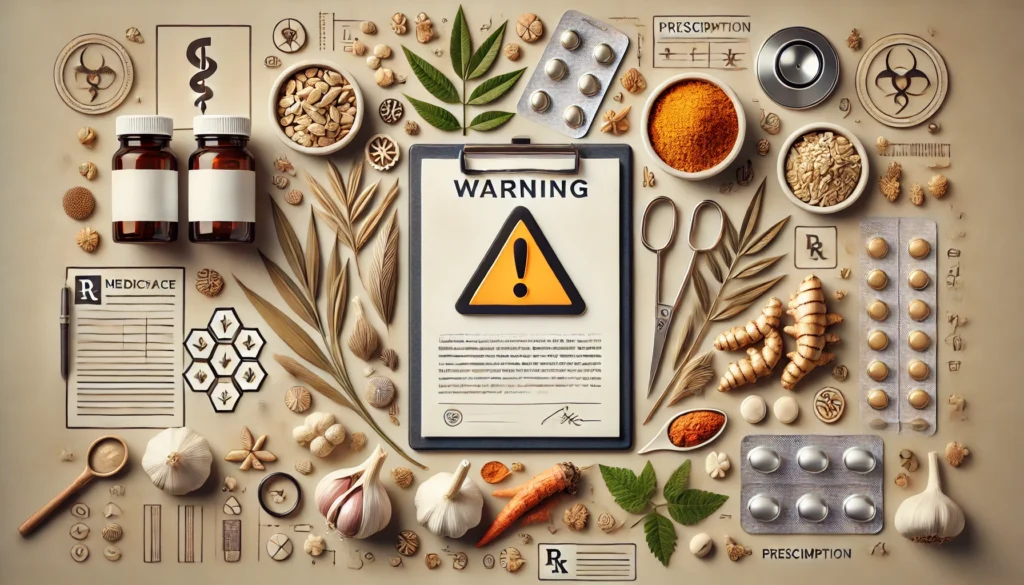
Cautionary Advice
While garlic is generally safe for most people, there are a few precautions to keep in mind.
Side Effects
Consuming large amounts of garlic, particularly raw garlic, can cause digestive upset, including bloating, gas, and heartburn. Garlic’s strong sulfur compounds can also lead to bad breath and body odor.
Medication Interactions
Garlic has blood-thinning properties, which means it can interact with anticoagulant medications like warfarin. If you are taking blood pressure or diabetes medications, be sure to consult your doctor before adding large amounts of garlic to your diet or taking garlic supplements.
Allergies
Although rare, garlic allergies can occur. Symptoms may include skin rashes, digestive issues, or breathing difficulties. If you suspect an allergy, it’s best to avoid garlic and speak with a healthcare professional.
Safe Dosage
For most people, consuming 1-2 cloves of garlic per day is considered safe and sufficient to enjoy its health benefits. If you are taking garlic supplements, follow the recommended dosage on the product label.
Pregnancy and Nursing
Garlic is generally safe during pregnancy and breastfeeding when consumed in normal food amounts. However, concentrated garlic supplements should be used with caution, as they may cause digestive upset or affect breast milk flavor.
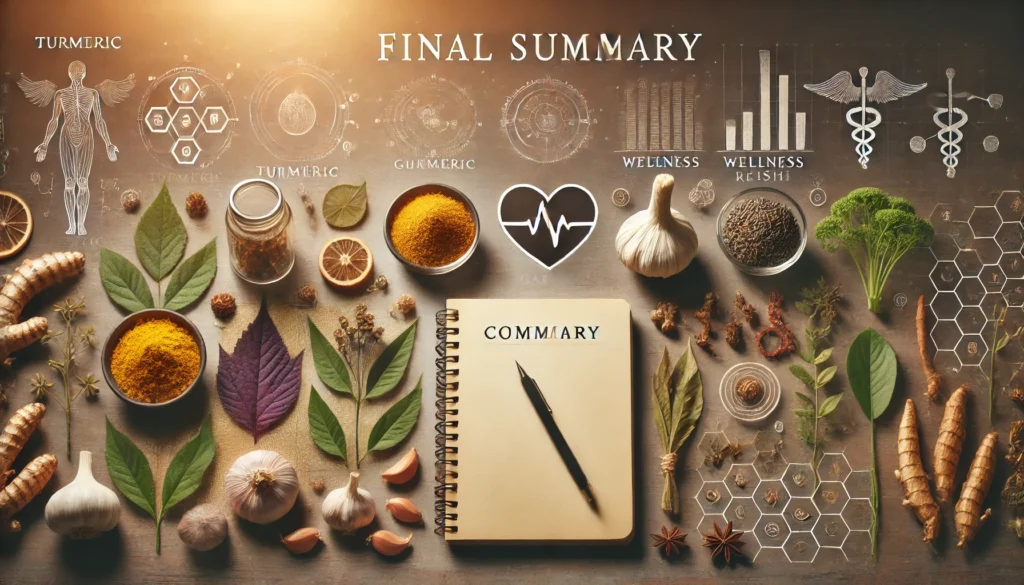
Conclusion
Garlic’s enduring popularity as both a culinary staple and a medicinal herb is a testament to its impressive range of health benefits. From supporting the immune system and heart health to fighting infections and promoting healthy aging, garlic truly deserves its place as one of the most powerful herbs available. Whether you enjoy it raw, cooked, or in supplement form, garlic offers a natural and effective way to boost your health. Incorporating garlic into your daily diet can be as simple as adding a clove to your favorite recipe, taking a garlic supplement, or trying out fermented black garlic for a unique and flavorful twist. With its rich history and modern-day health benefits, garlic is a small herb with a big impact—one that’s worth keeping in your kitchen and your health regimen.



